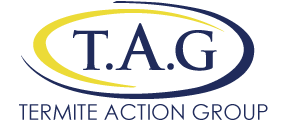It is very important to have good termite management systems incorporated into the construction of a home to avoid the rigours and costs of post-construction treatments.
These treatments may involve ‘drill and inject’ technologies, chemical dusting, trenching, baiting and concrete cutting to allow for chemical treatment.
You can be assured that any treatment will involve the use of chemicals as a termiticide. Why, you may ask? In the simplest of terms, only chemicals kill termites!
‘Drill and inject’ is a technology whereby often the exterior perimeter of a ‘slab on ground’ home will have concrete paths, driveway, porticos and patios which the termites traverse under and gain access to a home.
This can be accomplished in most instances by drilling holes through the concrete at about 6 inch (150mm) intervals so as to be able to insert a nozzle from a spray injection unit that disperses a pool of chemical termiticide under the concrete.
The chemical injection overlaps to form a barrier treatment.
External perimeter patio drilling ready for termiticide injection
Drilled holes are at uniform spaces to form effective barrier
Often you will find that an internal perimeter barrier also needs to be put in place which requires tiles to be drilled or replaced and carpet lifted to accommodate the drilling process.
This can be disruptive and expensive as well as impacting upon the aesthetics of the home.
Sometimes, these chemical barriers can be rendered ineffective where the chemical is deflected by lumps of mortar muck, fill and rubbish that are often buried under these areas.
Many homeowners wisely opt to have the existing concrete cut out and chemical trenching to be put in place as this can assist future replenishment treatments.
A concrete cutting machine
Concrete cut ready for removal
Cut extends to electrical conduit
Concrete removed for treatment
Trench backfilled with treated soil
As can be seen from the photographs above, this is a process whereby the concrete is cut away and removed and a trench of treated backfill becomes a perimeter barrier.
A tiled area with perimeter trench
This provides some assurance to the homeowner that the chemical treatment is being applied to all areas in an appropriate manner, so as to provide an effective treatment that can be easily serviced and replenished at a later date.
A tiled area with backfilled trench
Trench area with removable pavers for subsequent retreatments
In many instances, concrete pavers are put down as they can be readily removed for future treatments.
Trenching is a most reliable form of treatment and should be considered as a pre-construction preventative measure rather than a post-construction remedy.
Timber protection of the structural timbers with an effective borate treatment is an excellent alternative that provides even greater security to the homeowner.
Prevention is obviously better than cure and extra money spent at the pre-construction stage may provide greater security for a homeowner than expensive post-construction treatments.
Often, dusting treatments are used where the termite movement has been located and arsenic trioxide or triflumuron is used to dust a group of termites.
Dusting requires pest technicians to apply the termiticide to a number of termites in a manner so as to not overdose them but to make sure that there is enough residual application to be distributed through the colony.
The chemical is spread through the termite grooming process and should bring about the demise of the colony.
Brushes were often used in these applications although there are now spray motor dusters that are finely calibrated to spread termiticide at an even rate for maximum efficacy.
These termiticides either poison the colony or are growth regulators that inhibit the production of chitin which strengthens the exoskeleton.
The exoskeleton is shed during the moult process and the new exoskeleton does not harden because of the inhibited production of chitin.
Baiting is an excellent means of managing termite population and there are tremendous improvements and technological advances occurring in this area of termite management.
However, baiting should not be relied upon as a primary form of termite management but rather as a complementary form of termite management in taking pressure off existing defences.
Baiting is a “hit and miss” affair whereby termites are often known to bypass baits and enter houses where damage to structural timber elements will generally occur.
Obviously, these expensive post-construction measures can be avoided where proper pre-construction methodology has been utilised in a considered manner.
Appropriately installed chemical barriers and borate preservative treatments of timber would be considered to provide the best available form of termite protection.
© copyright 2006 The Termite Action Group (TAG) All Rights Reserved This publication or any part thereof shall not be copied or published by any means whatsoever, including electronic transmission, without the expressed written authority of the Termite Action Group (TAG).











